The Veterans Affairs (VA) provides a range of services to veterans with certain conditions, including hip pain and related conditions. If you’re a veteran with chronic hip pain, it’s important to understand how the VA rates your condition and what that means for your benefits.
This post will explore how the VA evaluates hip conditions, what that rating means for your benefits, and how to get the help you need. Read on to learn more!
What is Hip Pain?
Hip pain is any discomfort or soreness in the hip joint between the upper leg and torso. It can range from a dull ache to sharp throbbing sensations. Common causes of hip pain include arthritis, bursitis, strains, and fractures.
Common Causes of Hip Pain
The most common cause of hip pain is osteoarthritis when the cartilage cushions the joint and breaks down. Other causes include:
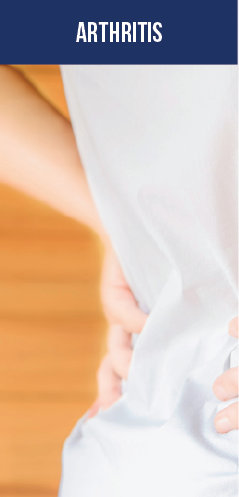
Arthritis
This includes both rheumatoid arthritis and psoriatic arthritis, which are both autoimmune conditions.
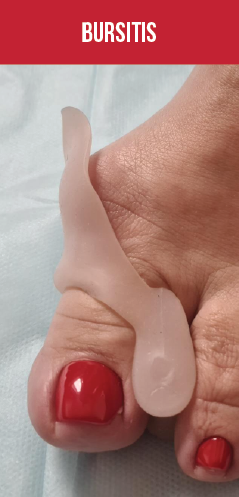
Bursitis
This is an inflammation of the fluid-filled sacs that cushion the bones in a joint.

Strains or Sprains
These injuries occur when ligaments surrounding the hip joint become overstretched or torn.
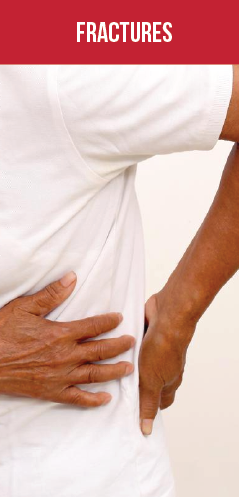
Fractures
This is a break in the bone that can occur due to trauma or as a result of osteoporosis.
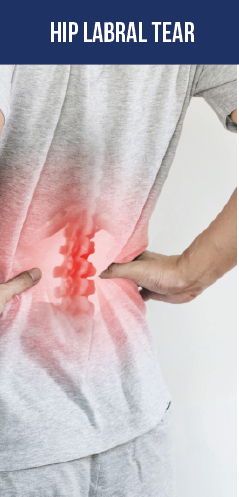
Hip labral tear
This occurs when the cartilage in the hip joint becomes torn or frayed.
Understanding the VA Disability Rating for Hip Pain
VA disability ratings for hip pain are determined by the underlying cause of the pain as well as its severity.
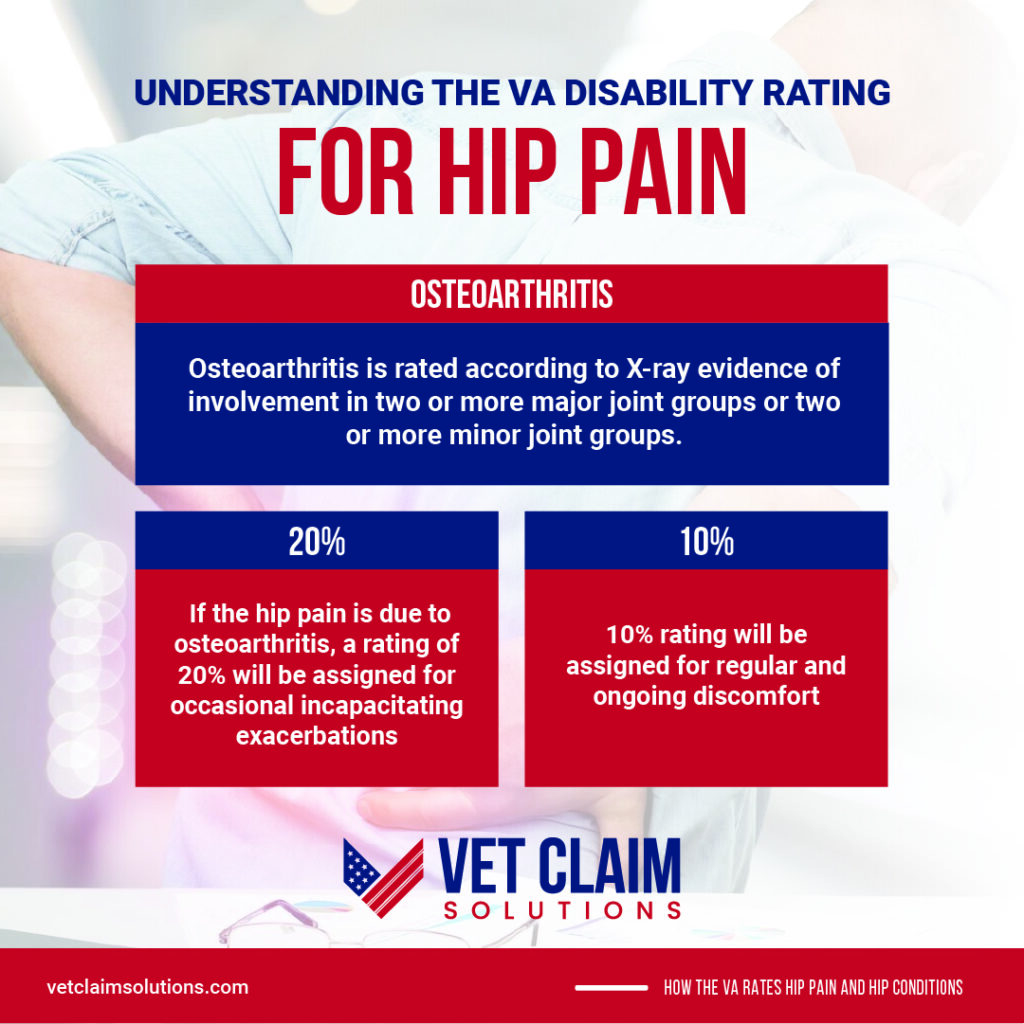
Osteoarthritis
Osteoarthritis is rated according to X-ray evidence of involvement in two or more major joint groups or two or more minor joint groups. If the hip pain is due to osteoarthritis, a rating of 20% will be assigned for occasional incapacitating exacerbations and 10% for regular and ongoing discomfort.
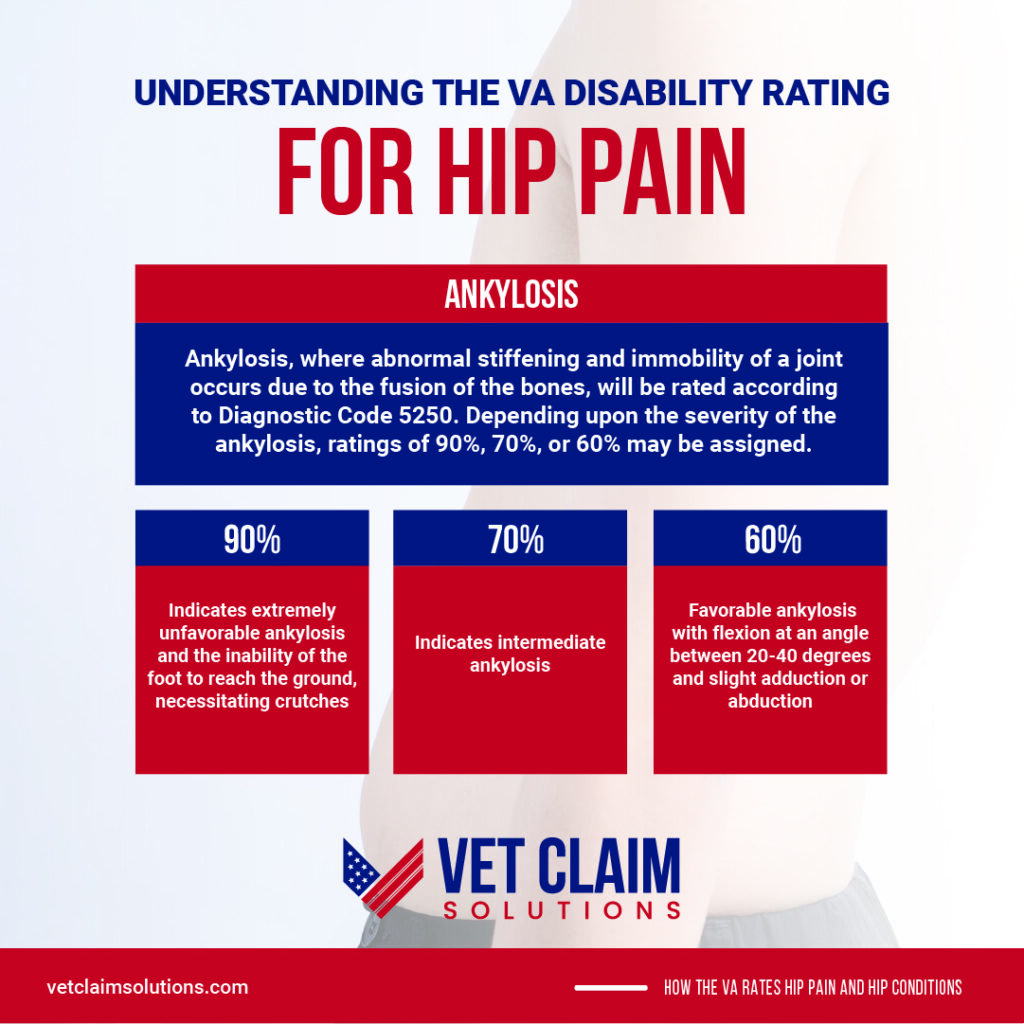
Ankylosis
Ankylosis, where abnormal stiffening and immobility of a joint occurs due to the fusion of the bones, will be rated according to Diagnostic Code 5250. Depending upon the severity of the ankylosis, ratings of 90%, 70%, or 60% may be assigned.
- 90% indicates extremely unfavorable ankylosis and the inability of the foot to reach the ground, necessitating crutches.
- 70% indicates intermediate ankylosis.
- 60% favorable ankylosis with flexion at an angle between 20-40 degrees and slight adduction or abduction.

Limitation of Motion
If the hip pain does not result in ankylosis, it will be rated based on the limitation of motion. To accurately determine this rating, orthopedic measurements are taken to assess range of motion in different directions within joints. These include :
Flexion: the motion of bringing the leg forward at the hip
Extension: the motion of extending the leg backward at the hip
Adduction: inward motion of the leg toward midline at the hip
Abduction: outward movement of the leg away from midline at the hip
Rotation: twisting of the leg to turn the foot outward
All of the above-mentioned movements are associated with a typical range of motion. If an individual’s hip pain causes restricted movement beyond this regular threshold, they may be eligible for disability ratings as per 38 CFR § 4.71a.
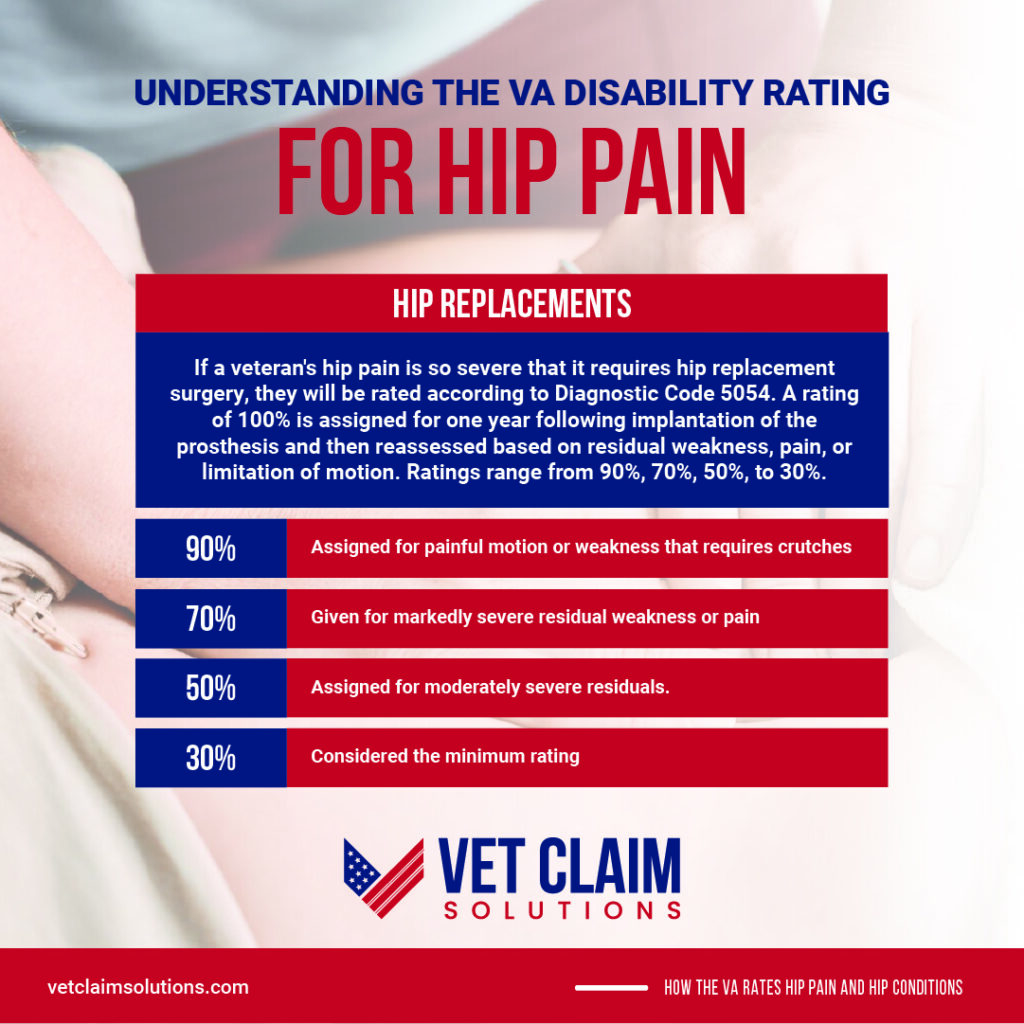
Hip Replacements
If a veteran’s hip pain is so severe that it requires hip replacement surgery, they will be rated according to Diagnostic Code 5054. A rating of 100% is assigned for one year following implantation of the prosthesis and then reassessed based on residual weakness, pain, or limitation of motion. Ratings range from 90%, 70%, 50%, to 30%.
- 90% is assigned for painful motion or weakness that requires crutches.
- 70% is given for markedly severe residual weakness or pain.
- 50% is for moderately severe residuals.
- 30% is considered the minimum rating.
How Do I Get a VA Disability Rating for Hip Pain?
To receive a disability rating for hip pain, you must first establish a service connection. This requires medical evidence that links the current condition and its symptoms to an in-service injury or event.

Establishing a Service Connection to Hip Pain
If you were diagnosed with hip pain while serving in the military, you could submit your medical records as evidence to establish a service connection. If the hip pain occurred after you were discharged, you need to provide a medical opinion linking the in-service event or injury with your current condition. This can be done through an official VA nexus letter from an authorized provider such as a doctor or psychologist.

Establishing Pain Alone As a Disability
In some cases, you may be unable to establish a service connection between your hip condition and an in-service injury or illness. However, the courts have recently determined that pain alone can qualify as a disability, no matter its underlying cause. To demonstrate functional impairment due to your pain, you must provide evidence of its severity and effects on your daily activities.
Additionally, you must demonstrate that your current pain is due to a prior in-service injury or illness and there is an evident medical link between the two. By providing this evidence to the VA, you may be able to gain disability benefits for hip pain even without a direct connection to military service.
Total Disability Individual Unemployability and Hip Pain

Total Disability Individual Unemployability (TDIU) is a special benefit that can provide additional financial compensation for veterans unable to work due to hip pain. This benefit allows veterans whose disability rating does not fully account for the impact of their hip pain on their ability to work to receive compensation at the 100% rate.
To be eligible for TDIU, veterans must prove that their hip pain prevents them from maintaining substantially gainful employment or any type of normal employment. The veteran’s ability to do their job is also considered when awarding benefits.
Need Help Filing a Claim for Hip Pain?
If you are a veteran suffering from hip pain, the experienced attorneys at Vet claim solutions can help. We understand the evidence needed to establish a service connection and demonstrate your hip pain’s severity.
We are committed to helping you through every step of the process, so you can get the compensation you need for your disability. Contact us today for more information.


